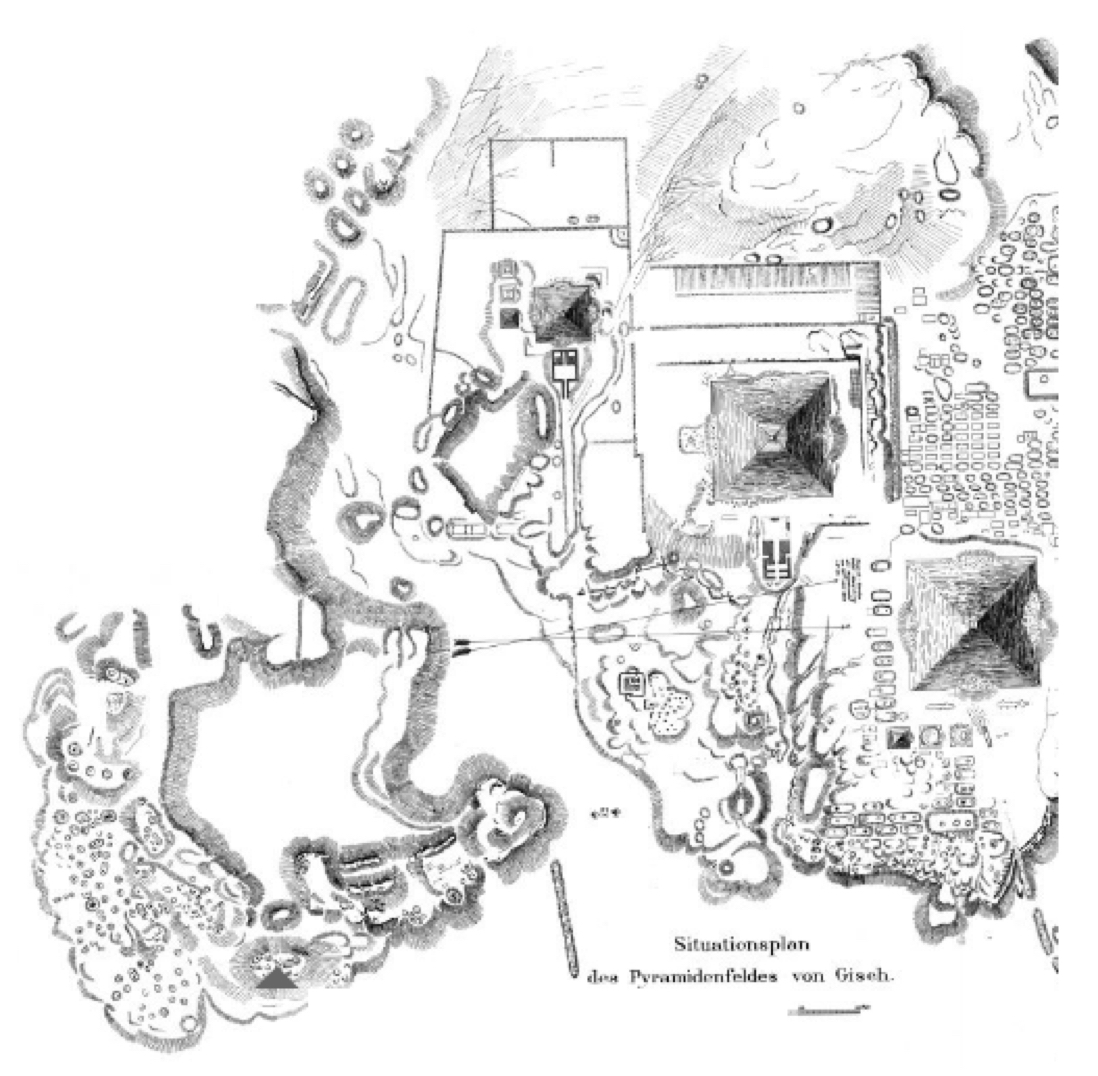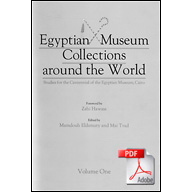-
- Format
- Article
-
- Language
- ENGLISH
-
- Year Published
- 2002
-
- Number of Pages
- 12
-
- Citation Text
- Flentye, Laurel. "The Development of Art in the Fourth Dynasty: The Eastern and GIS Cemeteries at Giza." In Mamdouh Eldmaty and Mai Trad, eds. Egyptian Museum Collections Around the World: Studies for the Centennial of the Egyptian Museum, Cairo. Cairo: Supreme Council of Antiquities, 2002, pp. 385-396.
-
- Individual - Ancient
- Ankh-haf (G 7510)
- Henutsen (G I-c)
- Khafre
- Khufu
- Khufukhaf [I] (G 7130-7140)
- Menkaure
- Nefermaat (G 7060)
- Nefretka (in G 7130-7140)
- Nefretkau (G 7050)
- Nefretkau (G 7130-7140)
- Snefru
- Snefrukhaf (G 7070)
-
- Individual - Modern
- George Andrew Reisner, American, 1867–1942
- Hermann Junker, German, 1877–1962
-
- Editor
- M. Eldamaty
- M. Trad
-
- Publisher
- Supreme Council of Antiquities
-
- Author
- Laurel Flentye, American
-
- Site Name Eastern Cemetery
-
- Site Name Western Cemetery
-
- Site Name Western Cemetery
-
- Site Name G I-South Cemetery
-
Fragment of gneiss seated statue of Khufukhaf I
- HUMFA_24-12-962
-
- HUMFA_24-12-656
-
- HUMFA_26-2-23
Ancient People
-
- Type Individual - Ancient
- Remarks Owner of G 7510. Husband of Hetepheres.
-
- Type Individual - Ancient
- Remarks Wife of Khufu.
-
- Type Individual - Ancient
- Remarks Fourth king of Dynasty 4. Son of Khufu. Builder of the Second Pyramid at Giza and probably of the Great Sphinx as well. Known two thousand years later by the Greeks as King Khephren. A number of diorite and greywacke statues and statue fragments depicting the king have been discovered in Khafre's valley temple, including Cairo CG 9-17. The fragmentary head of an alabaster royal statue (MFA 21.351 + MFA 33.1113) is attributed to Khafre.
-
- Type Individual - Ancient
- Remarks Second king of Dynasty 4, son of Snefru. Builder of the Great Pyramid at Giza, the only one of the Seven Wonders of the Ancient World still standing. Known two thousand years later by the Greeks as King Cheops. Horus name: [mDdw] Medjedu. Full birth-name: Khnum-Khufu.
-
- Type Individual - Ancient
- Remarks Son of Khufu and probably Henutsen. He is buried in G 7140.
-
- Type Individual - Ancient
- Remarks Fifth king of Dynasty 4. Son of Khafre. Husband of Khamerernebti II. Builder of the Third Pyramid at Giza. Known two thousand years later by the Greeks as King Mycerinus.
-
- Type Individual - Ancient
- Remarks Son of Nefertkau.
-
- Type Individual - Ancient
- Remarks Daughter of Khufukaf [I] (owner of G 7130-7140); appears as small girl behind her father on north inner jamb of chapel, identified as [sAt nswt]. Possibly also on south inner jamb, unlabeled.
-
- Type Individual - Ancient
- Remarks Probably Daughter of Snefru Probably Mother of Nefermaat (G 7060)
-
- Type Individual - Ancient
- Remarks Wife of Khafkhufu I. She is buried in G 7130.
-
- Type Individual - Ancient
- Remarks First king of Dynasty 4. Father of Khufu.
-
- Type Individual - Ancient
- Remarks Son of Nefermaat and grandson of Nefertkaw
Modern People
-
- Type Individual - Modern
- Nationality & Dates American, 1867–1942
- Remarks Egyptologist, archaeologist; Referred to as "the doctor" and "mudir" (Arabic for "director") in the excavation records. Nationality and life dates from Who was Who in Egyptology.
-
- Type Individual - Modern
- Nationality & Dates German, 1877–1962
- Remarks Egyptologist, Director of German-Austrian expedition to Giza, 1911–1929. Published 12 volumes of final excavation reports from Giza expedition. Nationality and life dates from Who was Who in Egyptology.
-
- Type Author
- Nationality & Dates American
-
- Type Editor
- Nationality & Dates
-
- Type Editor
- Nationality & Dates
-
Supreme Council of Antiquities
- Type Publisher
- Remarks Active until 2011; for current organization, see Ministry of State for Antiquities.
Name of this image
Description of the image duis mollis, est non commodo luctus, nisi erat porttitor ligula, eget lacinia odio sem nec elit. Sed posuere consectetur est at lobortis. Donec sed odio dui.

Sign up for My Giza | Log in
Email ‘My Latest Project’ Collection
Current Collaborators
- Heather ONeill heather@pixelsforhumans.com
- Nicholas Picardo npicardo@fas.harvard.edu
- Luke Hollis luke@archimedes.digital

